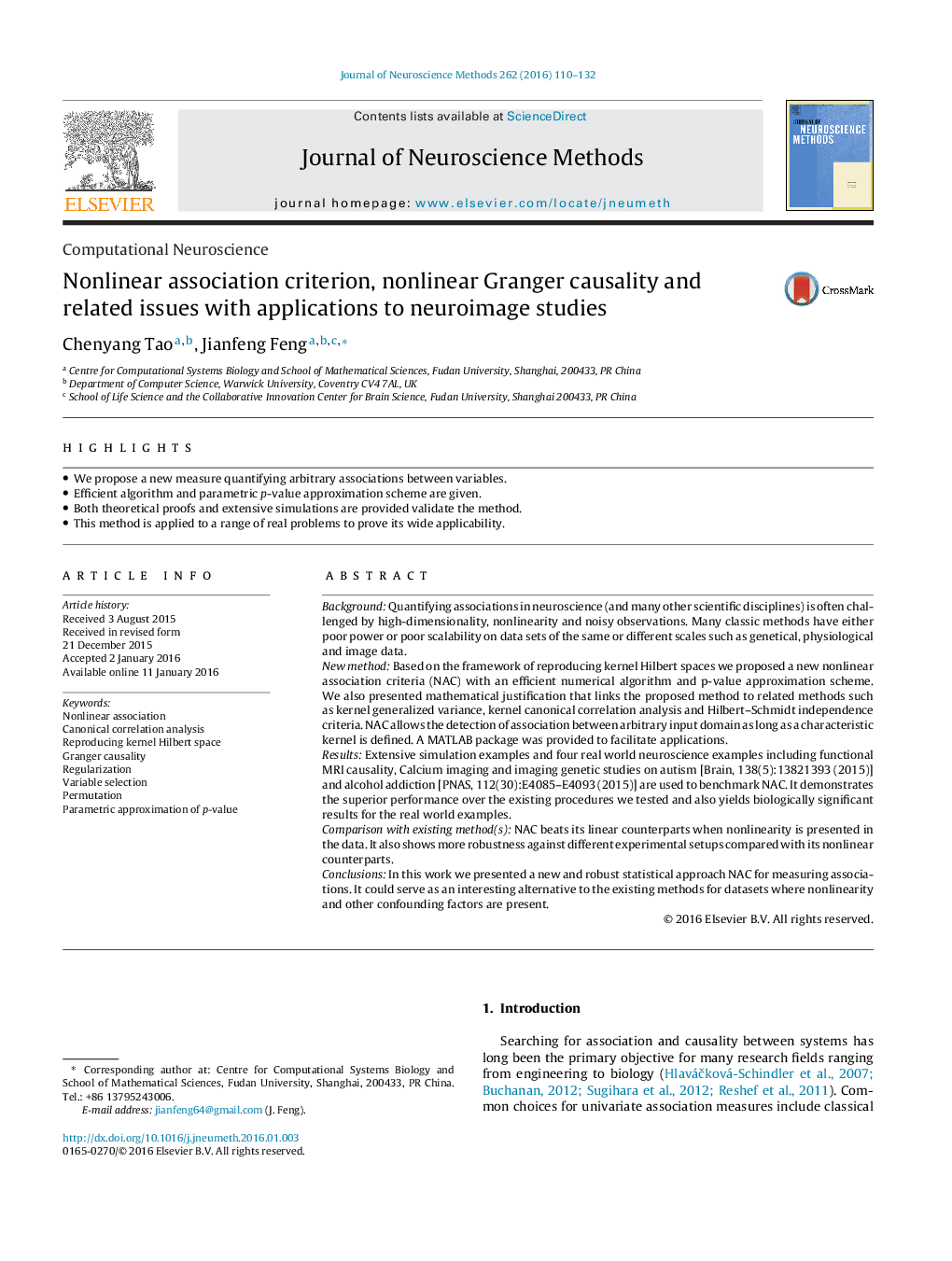| Article ID | Journal | Published Year | Pages | File Type |
|---|---|---|---|---|
| 6267916 | Journal of Neuroscience Methods | 2016 | 23 Pages |
â¢We propose a new measure quantifying arbitrary associations between variables.â¢Efficient algorithm and parametric p-value approximation scheme are given.â¢Both theoretical proofs and extensive simulations are provided validate the method.â¢This method is applied to a range of real problems to prove its wide applicability.
BackgroundQuantifying associations in neuroscience (and many other scientific disciplines) is often challenged by high-dimensionality, nonlinearity and noisy observations. Many classic methods have either poor power or poor scalability on data sets of the same or different scales such as genetical, physiological and image data.New methodBased on the framework of reproducing kernel Hilbert spaces we proposed a new nonlinear association criteria (NAC) with an efficient numerical algorithm and p-value approximation scheme. We also presented mathematical justification that links the proposed method to related methods such as kernel generalized variance, kernel canonical correlation analysis and Hilbert-Schmidt independence criteria. NAC allows the detection of association between arbitrary input domain as long as a characteristic kernel is defined. A MATLAB package was provided to facilitate applications.ResultsExtensive simulation examples and four real world neuroscience examples including functional MRI causality, Calcium imaging and imaging genetic studies on autism [Brain, 138(5):13821393 (2015)] and alcohol addiction [PNAS, 112(30):E4085-E4093 (2015)] are used to benchmark NAC. It demonstrates the superior performance over the existing procedures we tested and also yields biologically significant results for the real world examples.Comparison with existing method(s)NAC beats its linear counterparts when nonlinearity is presented in the data. It also shows more robustness against different experimental setups compared with its nonlinear counterparts.ConclusionsIn this work we presented a new and robust statistical approach NAC for measuring associations. It could serve as an interesting alternative to the existing methods for datasets where nonlinearity and other confounding factors are present.
